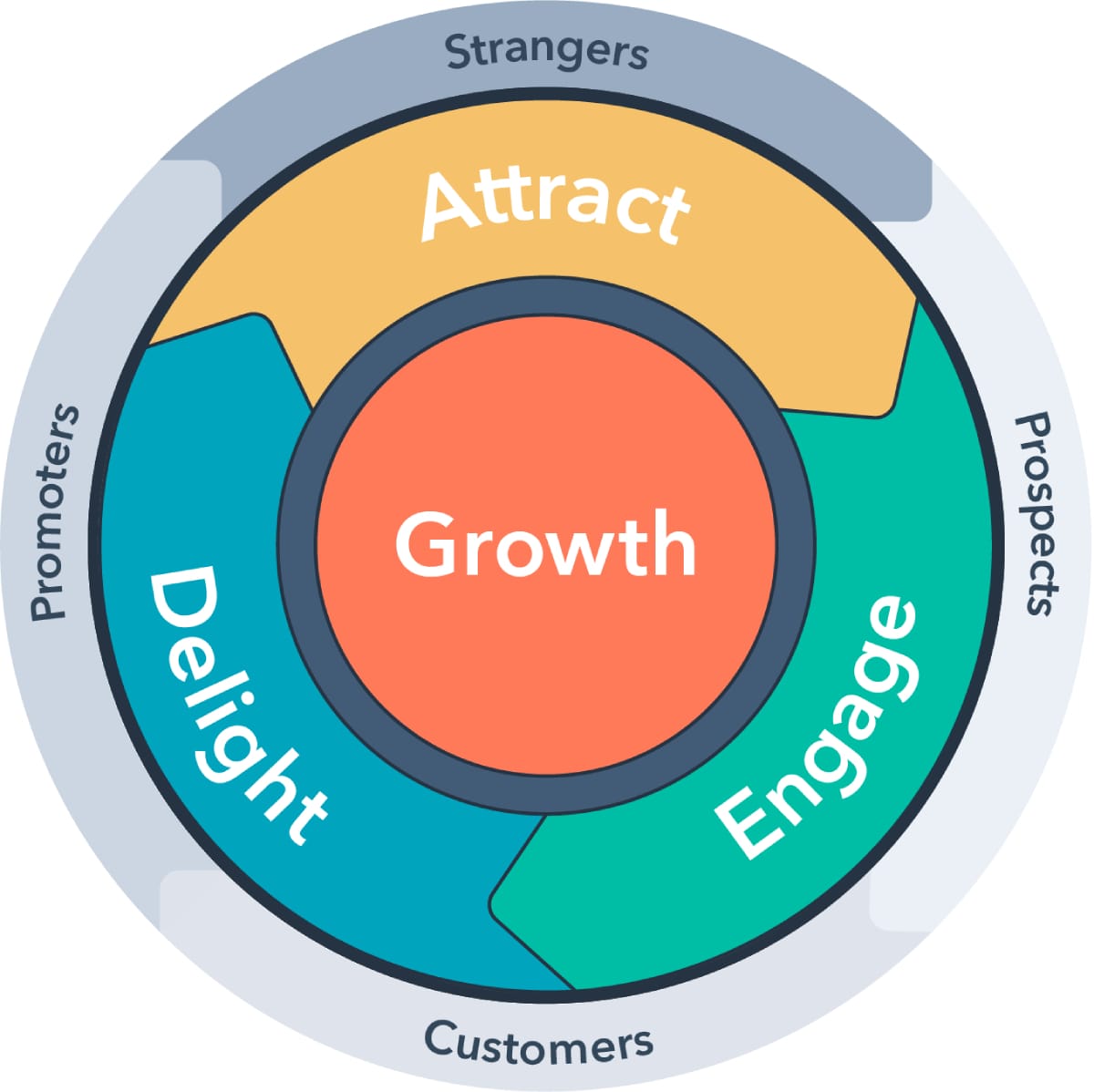Business Momentum: Applying The Flywheel Effect

Gaining and maintaining momentum can be the difference between success and stagnation. This is where the concept of the Flywheel Effect becomes a game-changer. Originally popularized by Jim Collins in his research and writings, the Flywheel Effect is a powerful metaphor for describing how businesses can achieve sustained growth and momentum. At its core, the Flywheel Effect is about creating a self-sustaining cycle of actions and results that build upon each other, gradually increasing in speed and impact over time.
Why is this concept critical for businesses today? Being marked by rapid technological advances and shifting market dynamics, the ability to adapt and maintain forward momentum is more important than ever. The Flywheel Effect offers a framework for thinking about growth not as a series of disjointed efforts but as a cohesive, ongoing process that compounds over time. It shifts the focus from short-term gains to long-term success, encouraging businesses to invest in the foundational elements that will drive their growth for years to come.
We will discuss the intricacies of the Flywheel Effect, exploring its principles, how to build and accelerate your business's flywheel, and strategies for sustaining momentum. Whether you're a startup looking to make your mark or an established company seeking to innovate and stay ahead, understanding and applying the Flywheel Effect can be your blueprint for dynamic growth and enduring success.
Part 1: Understanding The Flywheel Effect

The Concept and Origin of the Flywheel Effect
The Flywheel Effect is a concept borrowed from physics, where a flywheel is a heavy wheel that requires significant effort to start spinning. However, once momentum is gained, it takes much less effort to keep it spinning, and even small inputs can significantly increase its speed. In business, this metaphor translates to the accumulation of efforts that, over time, lead to greater speed, efficiency, and growth, with less incremental effort.
Jim Collins, in his seminal work "Good to Great," introduced the Flywheel Effect to the business world. He illustrated how companies that went from good to great didn't have one defining moment of transformation but rather a series of aligned and disciplined actions that, over time, built unstoppable momentum.

How the Flywheel Effect Differs from Traditional Growth Models
Traditional growth models often emphasize linear, step-by-step progress or breakthrough moments that dramatically change a company's trajectory. These models can be likened to pushing a giant boulder up a hill - requiring constant, heavy effort to achieve growth, with the risk of losing all progress if momentum isn't maintained.
In contrast, the Flywheel Effect suggests a model of continuous improvement where initial efforts are hard and slow but gradually lead to easier and faster growth. This model focuses on building and maintaining momentum through a self-reinforcing cycle of activities that feed into and accelerate each other.
Components of the Flywheel in Business Contexts
A business flywheel comprises several key components, each representing an essential aspect of the business that contributes to its overall momentum. These components often include:
- Customer Satisfaction: Happy customers are more likely to repeat business and refer others, growing revenue and enhancing the company's reputation.
- Operational Efficiency: Streamlined operations and effective use of resources increase output and reduce costs, allowing for reinvestment in growth areas.
- Employee Engagement: Engaged employees are more productive and innovative, driving better results and attracting talent.
- Product or Service Innovation: Continuously improving and expanding offerings to meet customer needs fuels growth and market position.
- Brand Strength: A strong, positive brand reputation attracts customers, partners, and opportunities.
By focusing on these areas, businesses can create a cycle where improvements in one area naturally lead to gains in others, thus spinning the flywheel faster and with less effort over time.
Part 2: Building Your Business Flywheel

Creating a flywheel for your business involves identifying the core components that will drive your growth and momentum. This process requires a deep understanding of your business model, customer needs, and what sets you apart in the marketplace. Here, we outline strategies for constructing your flywheel, kickstarting its initial momentum, and highlighting the crucial role of customer satisfaction and retention.
Identifying Core Components of Your Business's Flywheel
To build an effective flywheel, you must first identify the activities and processes that significantly impact your business's growth. This starts with a few key questions:
- What value do we provide to our customers? Understanding the core value proposition of your business is crucial. This value is what attracts customers and should be central to your flywheel.
- What processes or actions create this value? Identify the steps your business takes to deliver its value proposition. These processes are potential components of your flywheel.
- How can we measure success in these areas? Define metrics for each component to track progress and identify areas for improvement.
A simplified example of a business flywheel might include product development, marketing effectiveness, sales conversion rates, customer satisfaction, and repeat business/referrals. Each component feeds into the next, creating a self-reinforcing loop that drives growth.
Strategies for Initial Momentum
Gaining initial momentum for your flywheel can be challenging, as it requires aligning and optimizing each component. Consider the following strategies:
- Focus on Quick Wins: Identify areas where improvements can be made quickly and have a visible impact. This could be enhancing customer service processes to boost satisfaction, or refining your marketing message to attract more leads.
- Leverage Customer Feedback: Early and ongoing customer feedback can provide insights into what's working and what isn't. Use this feedback to make adjustments that improve the customer experience and, by extension, spin your flywheel faster.
- Invest in Your Team: Ensure your team understands the flywheel concept and how their work contributes to its momentum. Training and development can enhance their effectiveness and engagement.
Importance of Customer Satisfaction and Retention
Customer satisfaction and retention are often at the heart of a successful flywheel. Satisfied customers are more likely to make repeat purchases and recommend your business to others, thereby feeding new energy into your flywheel without significantly increasing marketing spend. To enhance customer satisfaction and retention:
- Deliver Exceptional Customer Service: Ensure that every customer interaction adds value and builds trust. Invest in training for your customer service team and implement feedback mechanisms to continually improve service quality.
- Personalize the Customer Experience: Use data analytics to understand customer preferences and tailor your offerings to meet their needs. Personalized experiences can deepen customer loyalty and encourage repeat business.
- Implement Loyalty Programs: Loyalty programs that reward repeat business can enhance customer retention and encourage higher spending. These programs should be easy to understand and genuinely valuable to your customers.
Building your business's flywheel requires a strategic approach to identifying its core components, gaining initial momentum, and prioritizing customer satisfaction and retention. As these elements align and your flywheel begins to spin, you'll find that achieving and maintaining growth becomes increasingly effortless.
Part 3: Accelerating The Flywheel

Once your business flywheel is in motion, the next challenge is to accelerate its speed — making your business grow faster with less effort. This part of the strategy involves reducing friction in your processes, leveraging technology and innovation, and drawing inspiration from real-world success stories.
Techniques for Reducing Friction and Increasing Speed
Friction in a business context refers to anything that slows down your operations, reduces efficiency, or hampers customer satisfaction. Reducing friction involves streamlining processes, removing unnecessary steps, and ensuring that your team can focus on high-value activities. Key strategies include:
- Process Optimization: Use tools like lean management and Six Sigma to identify inefficiencies in your operations. Streamlining workflows can significantly accelerate your flywheel by making each action more effective.
- Technology Adoption: Invest in technology that automates repetitive tasks, improves data analysis, and enhances customer interactions. CRM systems, marketing automation, and AI-driven analytics are examples of technologies that can speed up your flywheel.
- Employee Empowerment: Enable your team to make decisions that benefit the customer and improve processes. A culture of empowerment and accountability can lead to innovative ideas that drive your flywheel faster.
Leveraging Technology and Innovation
Innovation is the lifeblood of the flywheel effect in the digital age. By continuously improving your products, services, and customer experiences, you can stay ahead of competition and meet evolving customer needs. Consider the following approaches:
- Customer Experience Innovation: Use technology to create more engaging, personalized, and seamless experiences for your customers. This could range from enhanced online platforms to using VR for product demonstrations.
- Product and Service Development: Stay on the cutting edge of your industry by investing in research and development. New product lines or improvements to existing offerings can attract new customers and re-engage existing ones.
- Business Model Innovation: Sometimes, the key to accelerating your flywheel lies in rethinking your business model. Subscription services, freemium models, and platform-based approaches are examples of innovative models that have propelled businesses to new heights.
Case Studies of Successful Implementation
Examining the success stories of companies that have effectively accelerated their flywheels can provide valuable insights and inspiration. Consider the following examples:
- Amazon: Amazon's flywheel effect is a textbook example of using customer-centric strategies to drive business growth. Central to its flywheel is the focus on offering a wide selection of products at low prices with fast delivery. This strategy attracts more customers, which in turn draws more third-party sellers to the platform, increasing the selection and keeping prices competitive. Amazon continuously invests in logistics and technology (e.g., AWS, Prime) to improve efficiency and customer satisfaction, which drives more traffic and sales, further fueling its growth. The company's ability to reinvest profits into areas like AWS and Amazon Prime has not only accelerated its flywheel but has also diversified its revenue streams, solidifying its market dominance.
- Salesforce: Salesforce has leveraged the flywheel effect by focusing on customer success as its core business strategy. By providing a comprehensive CRM platform that continually evolves with new features and integrations, Salesforce ensures high levels of customer satisfaction and retention. This focus on delivering value helps attract new customers through word-of-mouth and industry reputation. Additionally, Salesforce's ecosystem of AppExchange partners creates a network effect, enhancing its offerings and making its platform more indispensable to users. By prioritizing customer success, Salesforce has managed to sustain growth and maintain its position as a leader in the CRM industry.
- Netflix: Netflix transformed the entertainment industry through its relentless focus on customer experience and innovation. Initially a DVD rental service, Netflix pivoted to streaming, continuously enhancing its platform based on user data and feedback. This focus on delivering value led to rapid growth in subscribers, which in turn fueled investments in original content. The production of compelling shows and movies attracted more subscribers, creating a powerful flywheel effect. Netflix's ability to adapt its business model and offerings has kept its flywheel spinning, making it a dominant player in global entertainment.
- Apple: Apple's flywheel effect is driven by its ecosystem of products and services, designed to work seamlessly together and lock in users. The launch of the iPod, followed by the iPhone, iPad, and various services like iTunes and the App Store, created an interconnected system that encourages loyalty and repeat purchases. Each successful product release attracts new users and encourages existing users to upgrade or buy additional products, creating a self-sustaining cycle of growth and innovation. Apple's focus on design, user experience, and integration has made its flywheel one of the most potent in the tech industry.
- Tesla: Tesla has accelerated its flywheel by focusing on innovation in electric vehicles (EVs) and renewable energy solutions. Its strategy involves creating high-performance, desirable EVs, which generate demand and fund further innovation. Tesla's direct sales model, investment in supercharger networks, and advancements in battery technology enhance customer satisfaction and drive sales, further funding research and development. This cycle of innovation and improvement has not only propelled Tesla's growth but has also significantly impacted the broader automotive industry's shift towards electric vehicles.
By analyzing these examples, businesses can identify strategies that might accelerate their own flywheels, focusing on innovation, customer satisfaction, and operational efficiency.
Part 4: Maintaining Momentum

After successfully building and accelerating your business flywheel, the ongoing challenge is to maintain its momentum. This phase is crucial for ensuring long-term success and involves continuous monitoring, feedback integration, and adaptation to evolving market conditions. Below, we explore strategies for keeping your flywheel spinning efficiently over time.
Monitoring Performance and Feedback Loops
Sustaining momentum requires a keen eye on performance metrics and an open ear to feedback from all stakeholders. Implementing a robust system for tracking the key components of your flywheel and the overall health of your business is essential. Consider these approaches:
- Key Performance Indicators (KPIs): Identify and regularly review KPIs that accurately reflect the health and speed of your flywheel. These might include customer satisfaction scores, repeat business rates, employee engagement levels, and innovation metrics.
- Customer Feedback: Utilize surveys, social media listening tools, and direct customer interactions to gather insights into how your business is perceived and where improvements can be made.
- Employee Feedback: Engage your team in regular discussions about obstacles they're facing and ideas for process improvements. Employee feedback is invaluable for identifying friction points and innovation opportunities.
Adapting and Evolving the Flywheel Over Time
The business world is constantly changing, and your flywheel must evolve to stay relevant and effective. This means being willing to reassess and adjust your strategies, processes, and even business model as needed.
- Market Trends and Technological Advances: Stay informed about shifts in your industry and broader market trends. Be ready to incorporate new technologies and approaches to keep your flywheel at the forefront of efficiency and innovation.
- Continuous Improvement Culture: Create a culture of continuous improvement within your organization. Encourage experimentation and learning from failures, as these are often the seeds of the next big breakthroughs.
- Strategic Pivots: Don't be afraid to make significant changes to your business strategy if certain components of your flywheel are no longer serving their purpose. Sometimes, a strategic pivot can reinvigorate your business and propel your flywheel to new speeds.
Future-proofing Your Business with the Flywheel Effect
Finally, applying the flywheel effect isn't just about achieving short-term gains; it's about building a resilient business capable of thriving in the future. This involves:
- Investing in Talent and Technology: Continuously invest in developing your team's skills and adopting technologies that can enhance your operations and customer experiences.
- Building Scalability: Design your processes and systems to be scalable, ensuring that as your flywheel spins faster, your business can handle the growth without compromising on quality or customer satisfaction.
- Sustainability Practices: Incorporate sustainable practices into your business operations. Not only is this good for the planet, but it also resonates with increasingly eco-conscious consumers and can become a key component of your flywheel.
Maintaining momentum through continuous monitoring, adaptation, and innovation ensures that your business flywheel not only keeps spinning but does so more efficiently and effectively over time. This approach lays the groundwork for sustained success and the ability to navigate the challenges and opportunities of the future.
Final Thoughts
The Flywheel Effect offers a compelling framework for driving and sustaining business growth. By understanding and applying the principles of building, accelerating, and maintaining a business flywheel, organizations can achieve remarkable momentum that becomes self-sustaining over time. This journey involves initial effort to create movement, strategic actions to increase speed, and constant vigilance to keep the momentum going. The real-world success stories of companies like Amazon, Salesforce, Netflix, Apple, and Tesla illustrate the power of the flywheel in action, serving as inspiration for businesses of all sizes.
As we conclude this exploration of the Flywheel Effect, remember that the journey to building unstoppable business momentum is a continuous one. It requires patience, perseverance, and a willingness to adapt and evolve. But the rewards — a thriving, dynamic business that grows with less effort over time — are well worth the investment.
Let's embrace the Flywheel Effect, setting our businesses in motion towards a future of endless possibilities and sustained success.
Key Takeaways
| Section | Key Takeaways |
|---|---|
| Introduction | The Flywheel Effect represents sustained business growth, with a focus on gradual momentum building. |
| Understanding The Flywheel Effect | It's a cycle of actions and results that build on each other, contrasting with traditional step-by-step models. |
| Building Your Business Flywheel | Identify key components like customer satisfaction and innovation. Focus on quick wins and team investment to gain momentum. |
| Accelerating The Flywheel | Optimize processes, adopt technology, and innovate in customer experience to reduce friction and drive faster growth. |
| Maintaining Momentum | Use KPIs and feedback to adapt and improve continuously. Invest in talent and scalability for long-term success. |
| Final Thoughts | Patience and adaptability are key to using the Flywheel Effect for self-sustaining growth and resilience. |





